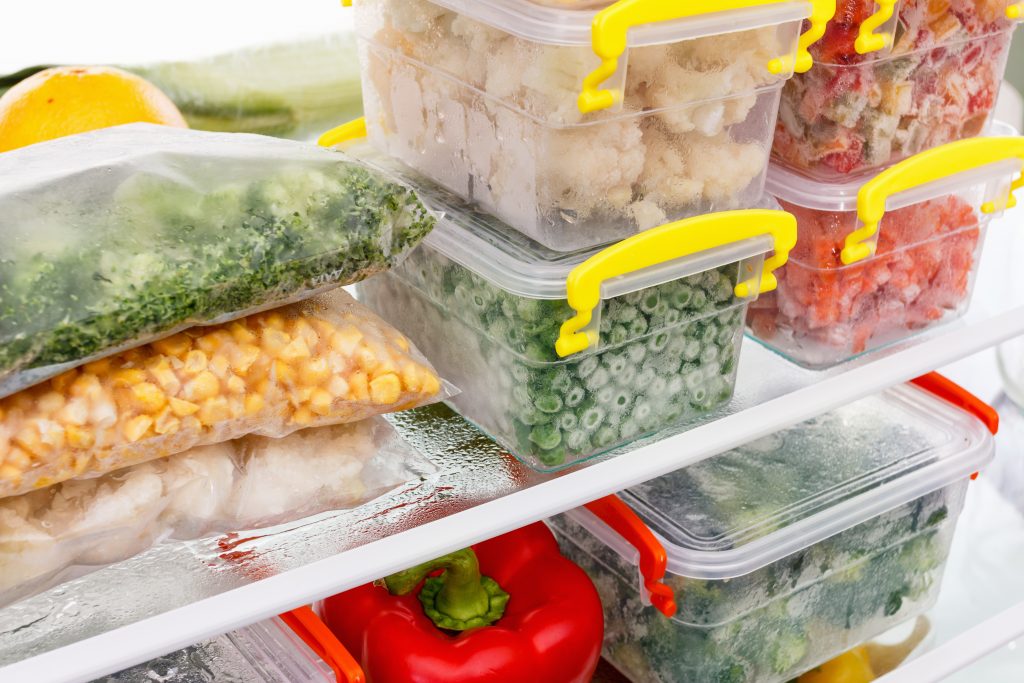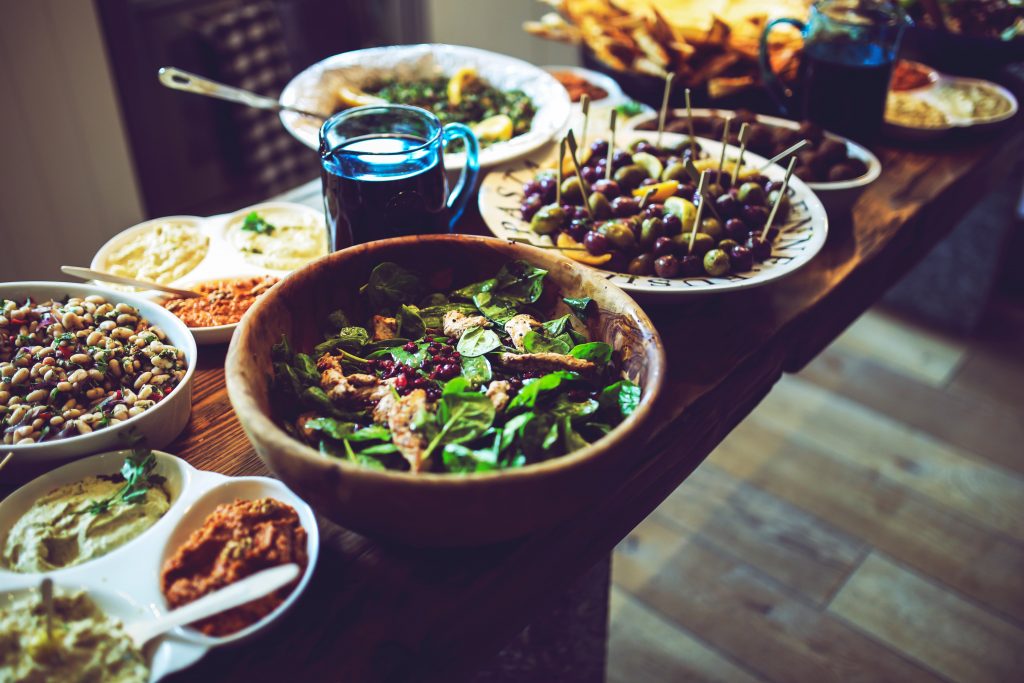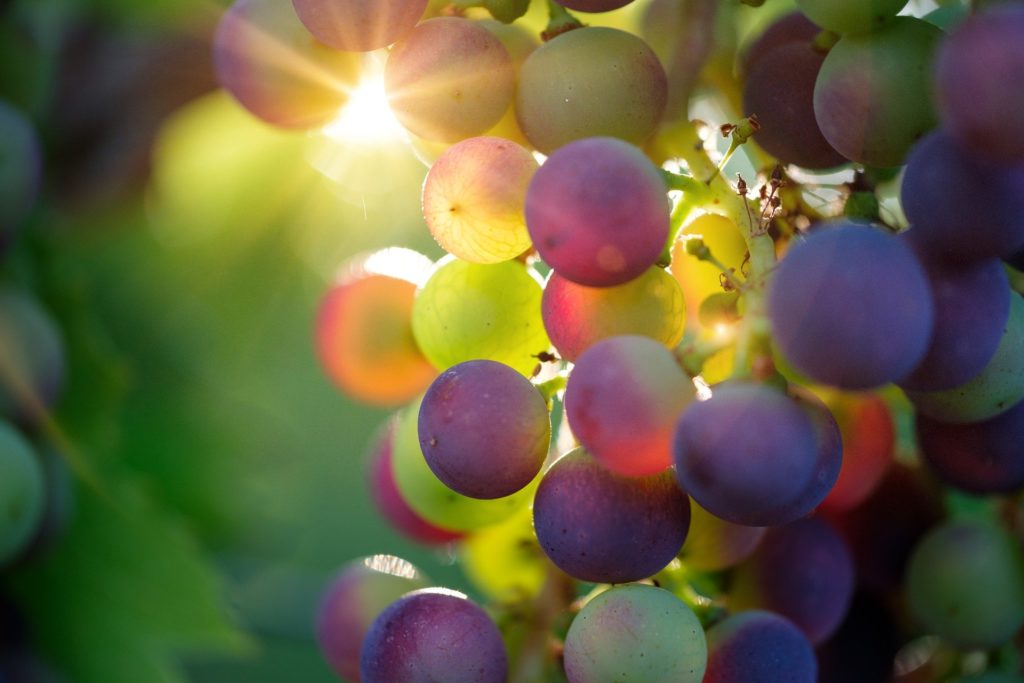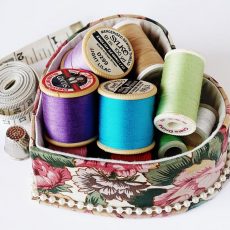
Phew! Well, we made it to September. Only 4 more months of 2020 to go! Depending on where you are in the world, fall or spring is in the air. But for us this month–and every month to be honest–’tis the season for sustainability. We decided to kick off our September by going back to school-style with the basics of how to get started living your most sustainable life. Today, we’ve got a recap of the 1st week of our #SustainableSeptember. Do you have to do all of these things right now, right this second? Absolutely not. Sustainability is a journey. We take it one step at a time. Pick just one or two things to start. In order to make lasting changes, we need to set goals we can achieve and feel good about.
Food Waste
One of the easiest areas to start your journey to a more sustainable life is by thinking about the things you eat. And, almost more importantly, the things you don’t. So, let’s talk food waste. Food’s carbon footprint is composed of the greenhouse gas emissions produced by growing, rearing, farming, processing, transporting, storing, cooking, and disposing of waste.
According to the Food and Agriculture Organization of the United Nations, an estimated 1.3 billion tons of food is wasted globally each year–one third of all food produced for human consumption. Here’s what you can do to waste less:
🛒 Shop locally whenever you can. The shorter the distance your food has to travel, the more likely it will reach your plate and not be lost to damage, expiration, or rot.
📅 Become better informed about what the dates on your food mean. Store-bought food comes with all sorts of labels and dates to let you know when it’s safe to consume. But these dates don’t always correlate to the current actual state of your food. And some of these measurements are more a measure of when a company thinks you should purchase more of their product, than of food gone bad. Safe handling and storing of your food will maximize its shelf life and its potential to nourish you.
💵 Don’t buy more than you need and make sure to use up your leftovers. Dinner last night makes an amazing lunch tomorrow.
🍌 If you can, compost your food scraps rather than throw them away.
🥫 Donate nutritious, safe, and untouched food to food banks in your area.

Farm to Table
Another way to reduce the carbon footprint of what you eat is by reducing the distance your food travels to your plate. Shorter distances mean lower emissions from transport. Additionally, this will eliminate some of the food waste that can be lost through damage and rot. Whenever possible:
🍅 Buy fruits and veggies grown locally and in-season. A quick internet search of, “What’s in season by me?” will give you a great idea of what’s available. The farmer’s market is definitely your friend, if there is one nearby.
🍎 Choose loose items over those packaged in plastic. Plastic waste is one of the overwhelming pollution problems facing the world today.
🏷 If purchasing packaged items, take a look at the labeling to see where they were produced. You may not be able to substitute for something more local, but it’s always good to know where things come from.
✅ Also, in terms of labels, look for any sustainability certifications.
♻️ Try to select items packaged in paper rather than plastic, or in recyclable materials like glass, tin, or aluminum cans.

Check Your Labels
A trip to the grocery store can seem pretty overwhelming when getting started with purchasing products that tick more of the sustainable living boxes we’re working toward. Here are a few of the major sustainability certifications you can look for on your food that may make your decisions a little easier:
🍓 USDA Organic: Used for products that are produced using organic practices. Organic farming is typically less environmentally disruptive than standard farming because it does not rely on pesticides or fertilizers.
🌿 Rainforest Alliance: Products are from farms in rainforest regions that meet strict environmental and social standards.
🌴 Roundtable on Sustainable Palm Oil (RSPO): Products use palm oil from plantations that meet benchmarks to reduce negative impacts on the environmental and local communities.
🐟 Marine Stewardship Council (MSC): Provides a certification for sustainably caught and managed seafood.
🤝 Fair Trade: This label promotes standards for fair labor practices, environmentalism, social policy, fair pricing, and community development.
🦋 Non-GMO: This label ensures that products are free of genetically modified organisms.
🌲 Sustainable Forestry Initiative: A sustainable forest management standard and certification system that seeks to expand the practice of sustainable forest management in North America. You’ll find this on paper packaging.
♻️ Recyclable sign on your packaging. Do your best to stay away from non-recyclable or hard to recycle items, like plastic bags and film.

Lowering Your Meat Intake
Whether you care about animal welfare or environmental ethics, lots of people have beef with the meat industry. According to recent studies, the production of animal products contributes up to 14.5 percent of all anthropogenic GHG emissions, releases large amounts of methane into the atmosphere, causes deforestation and impacts wildlife as green spaces are cleared to grow feed, and requires massive amounts of water for each animal. Then there are the horrors of factory farming and live animal markets—pandemic anyone?
One study even suggests that avoiding meat and dairy is the biggest impact you can have on the planet.
But do you need to go full-throttle vegan RIGHT THIS SECOND?
No, not at all. Instead, try:
🍝 Purposefully choosing one meal a week, or a day, or even an entire day (yay, #MeatFreeMonday) to go meat free—pasta is a super simple way to make a meat free meal the whole family will enjoy.
🐄 When purchasing animal products, do your best to look for responsible sources that take animal welfare seriously. We know it can be cost prohibitive, so please don’t beat yourselves up.
♻️ Do always keep in mind the plastic packaging. Buying from the meat counter or a butcher can eliminate this bit of plastic waste.
💵 Regardless of a meatless meal or not, be mindful of food waste and save your leftovers for another day.

Happy Hour
When trying to live our most sustainable lives, we think a lot about the carbon footprint of what we eat, but no conversation about sustainable consumption would be complete without turning our heads towards what we drink. While we often consider the health ramifications of imbibing responsibly on our bodies, we can also consider the ramifications on our planet.
To begin with, all alcohol is an agricultural product. Hops and grains for beer, grapes for wine, sugar cane for rum, agave for tequila, potatoes for vodka, etc. – all require land to grow, water, and fertilizer use. Healthy crops require healthy pollinators. Then there’s the actual production of the beverage, refrigeration and transport, and packaging to consider. All of this adds up to the carbon footprint of your beverages.
Can responsible drinking fit into a sustainable lifestyle? Of course. Sustainability is on the front of many minds these days, and the booze industry is no exception. First and foremost:
🏷 Check your labels and do your research. Look for companies that have committed to reducing their emissions, properly managing and lowering their waste, and are dedicated to transparency. If you can’t get info about a product, it’s probably not one you want to consume.
🍷 Wine makers are experimenting with lighter, more durable and more environmentally friendly packaging options to the classic tapered bottle including lined cardboard cartons, bioplastic bag in box, aluminum cans and pouches. Lighter packaging will lower the carbon cost of transport and recycling. So, give these a try! Many restaurants now even offer wine “on tap.” This kind of bulk packaging reduces the wine’s carbon footprint and is also reusable just like a beer keg.
🍺 When you feel like a beer, reach for a pint before a can, and a can before a bottle. Kegs are almost eternally reusable and cans are 100% recyclable. If you have a local that sells them, grab a growler. They are endlessly refillable.
🥃 When it comes to the hard stuff, again, it’s all about research. Look for companies sourcing their ingredients locally, repurposing waste products (spent mash and carbon from distillation makes for great animal feed and fertilizer), choosing clean energy and using greener packaging.
🍹 Don’t forget to keep it simple with the mixers as they will add an additional carbon tax to your bar tab. Exotic juices or highly processed mixers – pass! Local, fresh ingredients – go for it!

Pets
Did you know that if you’re a pet owner, there are also opportunities to grow your sustainable lifestyle routine with your fur babies? By adopting an animal into your life, you’re also adopting its carbon footprint—let’s face it, your dog isn’t taking down cows in the wilderness that come wrapped in plastic, and your cat isn’t using litter in a bag out in the woods. Just like the food we consume, our pet’s food has a carbon footprint comprised of the growing, rearing, farming, processing, transporting, storing, cooking, and disposal of waste and packaging. Additionally, there is the carbon footprint of products for dealing with waste i.e. doggie 💩 bags and cat litter.
Here are things to think about and ways to add a little more sustainability to the sustainable joy of sharing your life with a pet:
🏷 Start by checking your labels. Sound familiar? Where is your pet food coming from? It’s going to be harder to find things sourced locally, but it’s good to be aware and shop around.
🥩 What is your pet food made of? Ingredients that include meat products will have a higher carbon footprint. Again, this might be hard to swap up, but it’s good to know and consider alternative ingredients.
✅ You can find some of the same certifications on pet food as you do on people food. Marine Stewardship Council for sustainable sourced fish, USDA Organic for products that are produced using organic practices, Dolphin-Safe, and animal welfare certifications like Global Animal Partnership (GAP), a 10-year-old organization that certifies meat products and animal ingredients to encourage livestock agriculture industry players to improve animal welfare standards.
♻️ Choose wet canned food over plastic pouches or cups. It’s much easier to recycle—if the plastic options are even recyclable at all. For dry food, also look for brands that package in paper. The inner part will likely be plastic coated, but since the bags consist of several layers, you can disassemble them and recycle the paper. You can also repurpose bags for trash can liners.
🐈 For cat waste, try to use litter packaged in paper and made of all-natural ingredients. Check and compare labels just like with food. If that’s not an option, no worries. Try to reuse any packaging as trash liners to get a second use out of it.
🦮 For dog waste on the go, you can choose compostable bags.
🐍 For other types of pets, many of the same tips apply: check and compare your labels and look for plastic-free options for all your supplies.

Any of these areas is a great starting point for your sustainability journey. You can download the free (and no ads, we promise!) swrm app to get started tracking all of these things in your daily life right now. You’ll be able to scan all of your purchases and see your current carbon footprint for the day. Ideally, it should be below 13.2lbs or 6kg of CO2. If it’s not, don’t worry! We’ll keep working on that together this month.



